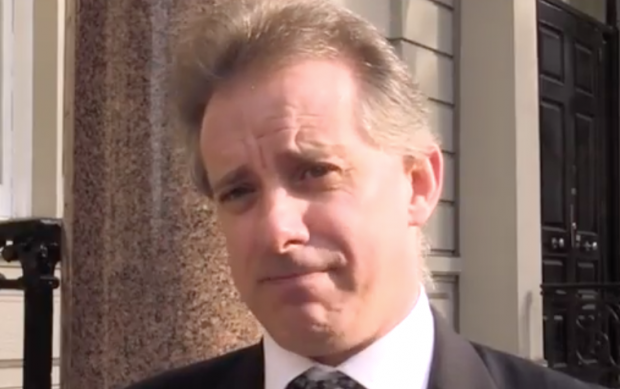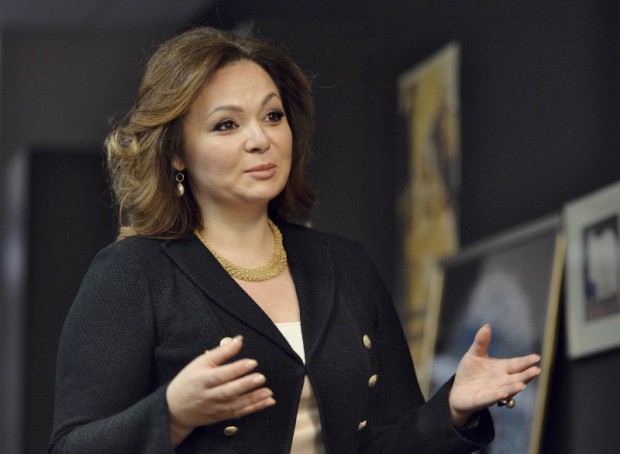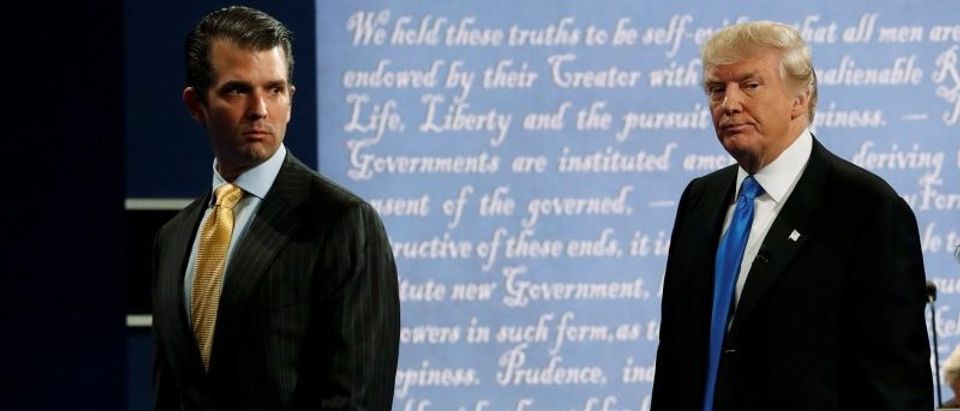Eleven days after Donald Trump Jr. met in his Trump Tower offices with a Kremlin-connected lawyer, former British spy Christopher Steele authored the first of 17 memos alleging various illicit connections between the Trump campaign and Russian government.
That dossier, which was financed by a political ally of Hillary Clinton, has been the subject of intense speculation since it was published by BuzzFeed News in January.
The document’s veracity has been questioned, and several inconsistencies have been found in the 17 memos. But the FBI reportedly used the Steele dossier to form the basis of its investigation into whether members of the Trump campaign colluded with the Kremlin. FBI officials even obtained a surveillance warrant against former Trump campaign adviser Carter Page based on the dossier’s allegations that he met secretly with Kremlin officials last July. (RELATED: Emails Show Trump Jr. Knew Information May Have Come From Russian Government)
Page strongly denied the claims and calls Steele’s document “the dodgy dossier.”
But some elements of Steele’s June 20 memo match up loosely with what’s known about the June 9 Trump Tower meeting.

Former British spy Christopher Steele. (Youtube screen grab)
Emails released on Tuesday by Donald Trump Jr. show that he agreed to take that meeting after he was told that “a Russian government attorney” would be providing him with derogatory information about Hillary Clinton.
On June 3, Rob Goldstone, a music publicist and acquaintance of the Trumps, wrote Trump Jr. saying that one of his clients “offered to provide the Trump campaign with some official documents and information that would incriminate Hillary and her dealings with Russia and would be very useful to your father.”
“I love it,” Trump Jr. responded to Goldstone, whose main client is Emin Agalarov, the pop musician son of Russian billionaire and Putin crony Aras Agalarov.
Trump Jr. and Goldstone hammered out a schedule for the meeting, and eventually settled on June 9 as the date. Trump Tower was the location. Trump son-in-law Jared Kushner and campaign chairman Paul Manafort also attended.
Both Trump Jr. and Natalia Veselnitskaya, the lawyer he met with, say that no anti-Clinton information was provided during that meeting. Instead, both participants have said that Veselnitskaya spoke against the Magnitsky Act, a 2012 law which places sanctions against Russians accused of human rights abuses.
In his June 20 memo, Steele describes a Kremlin-backed effort to provide the Trump campaign with information about Clinton.
Trump “and his inner circle have accepted a regular flow of intelligence from the Kremlin, including on his Democratic and other political rivals,” reads the memo, which Steele wrote based on information he received third-hand from “a senior Russian Foreign Ministry figure and a former top level Russian intelligence officer still active inside the Kremlin.”
Steele, a former MI6 intelligence officer who worked in Moscow, was prohibited from visiting Russia. He reportedly obtained his information for the dossier by paying Russian sources. Steele’s reliance on indirect information has been one of the main critiques of the dossier.
Steele’s two sources claimed that “Russian authorities had been cultivating and supporting…Trump for at least five years.”
The second source asserted that the effort was supported by Russian president Vladimir Putin.
Goldstone’s emails to Trump Jr. do include a reference to the Russian government’s support for the Trump campaign.
“This is obviously very high level and sensitive information but is part of Russia and its government’s support for Mr. Trump — helped along by Aras and Emin,” wrote Goldstone, referring to the Agalarovs.
According to Steele, the senior Russian Foreign Ministry official had confided in Steele’s contact “that the Kremlin had been feeding Trump and his team valuable intelligence on his opponents, including Democratic presidential candidate Hillary Clinton, for several years.”

Russian lawyer Natalia Veselnitskaya speaks during an interview in Moscow, Russia November 8, 2016. Picture taken November 8, 2016. REUTERS/Kommersant Photo/Yury Martyanov
According to Steele’s dossier, Russia’s intelligence agency, FSB, had been compiling a dossier of its own on Clinton for many years.
The dossier “comprised mainly eavesdropped conversations of various sorts rather than details/evidence of unorthodox or embarrassing behavior.”
Steele’s source claimed that some of the information was gleaned from bugged conversations Clinton had made during trips to Russia.
But that dossier “has not as yet been made available abroad, including to Trump or his campaign team,” Steele wrote.
The White House has vigorously denied the claims in the Steele report. And after the Trump Tower meeting with Veselnitskaya was revealed over the weekend, Trump’s legal team noted a peculiar connection between the lawyer and Fusion GPS, the opposition research firm who hired Steele to investigate Trump. (RELATED: EXCLUSIVE: Oppo Researcher Behind Anti-Trump Dossier Worked On Pro-Kremlin Lobbying Campaign)
Veselnitskaya and Fusion GPS have worked for several years on the campaign to roll back the Magnitsky Act. Both Veselnitskaya and Fusion GPS worked with the law firm BakerHostetler as part of an influence campaign to neuter the sanctions bill, which the Kremlin strongly opposes.


